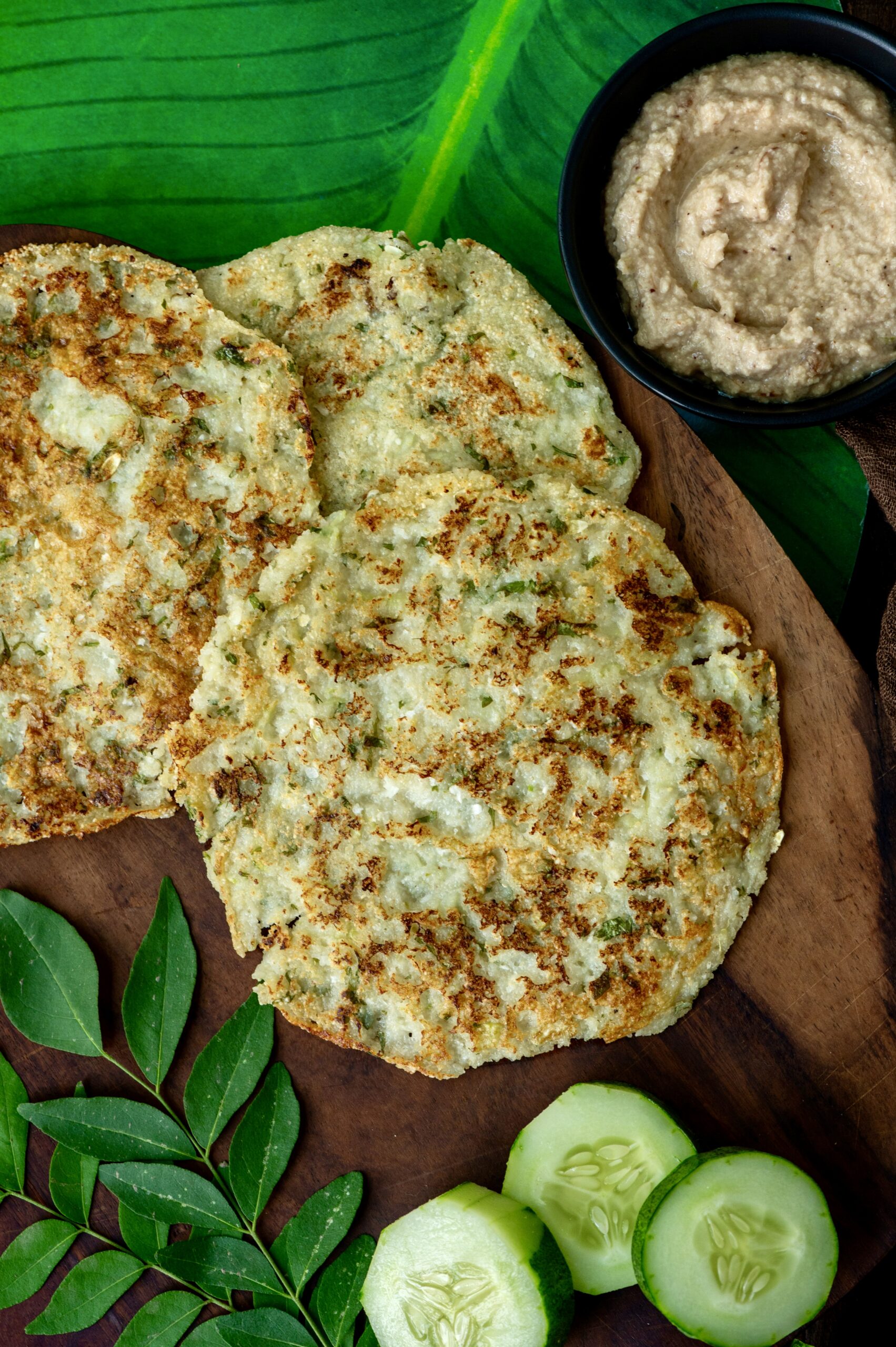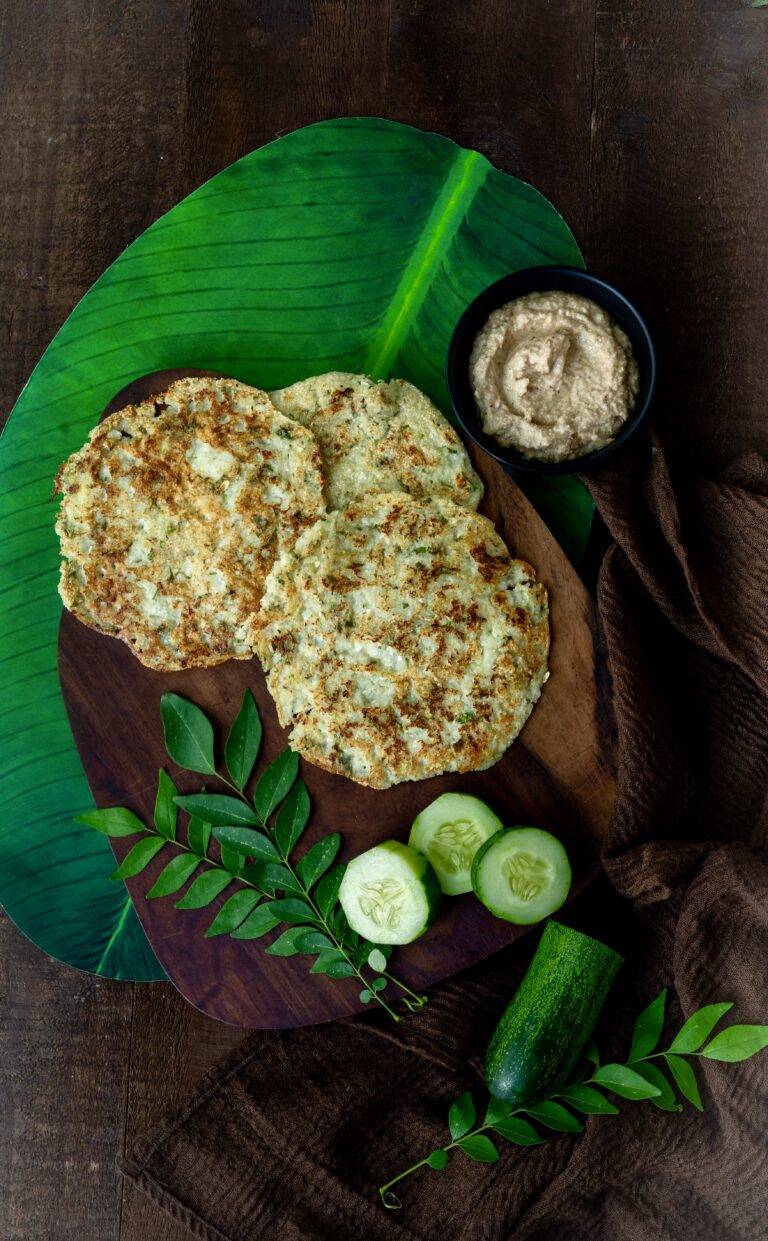I would describe a doddaka as being a kind of cross between a dosa and a roti, and some version of it exists in numerous cultures in India, including in Goa, Karnataka, Maharashtra and even Gujarat (my mother-in-law used to make that version). As with both dosas and rotis, numerous variations in preparation exist. I experienced a lovely bottle gourd doddaka a few months ago, and even though I’ve been travelling a lot this year and haven’t spent as much time cooking, I keep thinking about it. So I decided the other day to try out the recipe myself. It came out well, and as always, I wanted to share the deliciousness with you too.
I encountered this bottle gourd doddaka while we were zipping around in the lead-up to my son’s wedding a couple of months ago. We had not wanted to invite people digitally, and felt that the effort of the time-honoured Indian custom – of personally visiting people and inviting them – was well worth it. On one such visit, we went to meet a Kannadiga friend of ours. Our friend’s elderly mother was present at their home. It turned out that she is a reader of this blog, and we spent time chit-chatting about food and photography.
It had been a long and exhausting day, and we had arrived at their home at almost 7.30pm, which is beyond my dinner time, and at some point during the visit we were offered a meal. Our friend’s mother made us some hot, crispy bottle gourd doddaka – and from then on, the conversation stopped being about my cooking and became about hers. It tasted marvellous, and I thought it was quite interesting from a culinary perspective too. I enjoyed it thoroughly. When I think of that evening, I remember feeling like I was at home. That was truly a comfort food experience in every way.
Whenever I go somewhere and try out a new dish, I am curious – to the point of being painful, according to my children – about how to prepare it. I will immediately want to find out what the cook did, why they did it, and how they did it. Usually, I will then try to add my own twist as well. This is not always necessary. With this traditional Kannada doddaka for example, I thought the original recipe – as shared by our friend’s mother – was just perfect, and I didn’t feel the need to change it at all.
Isn’t it beautiful how you sometimes meet a person in passing and then strike up a conversation with them that just stays with you in some way? To me, the fact that I have a recipe from that evening, and will probably always think of that family and their home when I make it, really means a lot.

Bottle Gourd Doddaka
(Yield: 8 pieces)
1 cup rawa
½ cup coconut grated
¾ cup thick curd
1 cup water
½ cup grated bottle gourd (substitute: cucumber)
Salt to taste
1 teaspoon green chilli + ginger paste
¼ cup chopped coriander leaves
Oil for cooking
In a bowl, add all the ingredients and mix well. Set aside. Adjust the water quantity as required – keep the batter thick yet of a pouring consistency.
Heat a griddle and add a few drops of oil. Now, pour a ladle full of the batter onto this. You will see that it spreads by itself. Allow the doddaka to cook on a low or medium flame, making sure it does not get burnt. Flip and allow to cook on both sides until well done. Continue to prepare more doddakas with the remaining batter.
Serve with a chutney of your choice. I have a range of these that you can explore, and I hope you’ll find a few in the archives that you like and can mix and match with various dishes. As this bottle gourd doddaka has quite a bit of flavour already, it can also be eaten plain if you prefer.
As you would have noticed in the ingredients, I have suggested cucumber as a substitute for bottle gourd. Both are water-based vegetables that grow through the year in South India, where we have no seasons other than summer, summer and more summers – and some monsoons. Thus, they are ideal for staying hydrated. Bottle gourd in particular doesn’t have much flavour by itself, and takes on the flavour of whatever you add to it (which makes it perfect for sneaking into soups for fussy kids). Nutrition and hydration together are an excellent combo, and when you add taste to it – as you do with a doddaka – it’s unbeatable.

